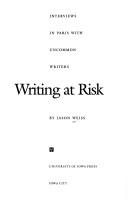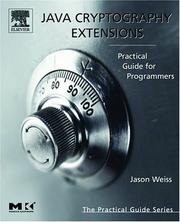| Listing 1 - 8 of 8 |
Sort by
|

ISBN: 1587292491 9781587292491 0877453489 0877453497 9780877453482 9780877453499 Year: 1991 Publisher: Iowa City, IA University of Iowa Press
Abstract | Keywords | Export | Availability | Bookmark
 Loading...
Loading...Choose an application
- Reference Manager
- EndNote
- RefWorks (Direct export to RefWorks)
Much has been made of the image of writers in Paris-romanticized and idealized in fiction and on screen, these émigré artists in sidewalk cafés spark our imagination with unusual force. But rarely do the real-life figures speak to us directly to comment on their work, their lives, and their reasons for choosing to live and work in Paris.In these striking interviews, E. M. Cioran, Julio Cortázar, Brion Gysin, Eugène Ionesco, Carlos Fuentes, Jean-Claude Carrière, Milan Kundera, Nathalie Sarraute, and Edmund Jabès do just this as they speak out on the risks they've taken, on the
Authors -- Interviews. --- Paris (France) -- In literature. --- Paris (France) --- In literature.
Book
ISBN: 1280117184 9786613521477 0819571601 9780819571601 9781280117183 9780819571588 081957158X 9780819571595 0819571598 Year: 2012 Publisher: Middletown : Wesleyan University Press,
Abstract | Keywords | Export | Availability | Bookmark
 Loading...
Loading...Choose an application
- Reference Manager
- EndNote
- RefWorks (Direct export to RefWorks)
You never heard such sounds in your life
ESP-Disk' (Firm). --- Jazz musicians - United States. --- Jazz musicians --- Music --- Music, Dance, Drama & Film --- Music History & Criticism, General --- Musicians

ISBN: 9780127427515 0127427511 9780080535241 0080535240 9786611033774 1281033774 Year: 2004 Publisher: San Francisco, CA : Elsevier/Morgan Kaufmann,
Abstract | Keywords | Export | Availability | Bookmark
 Loading...
Loading...Choose an application
- Reference Manager
- EndNote
- RefWorks (Direct export to RefWorks)
For a long time, there has been a need for a practical, down-to-earth developers book for the Java Cryptography Extension. I am very happy to see there is now a book that can answer many of the technical questions that developers, managers, and researchers have about such a critical topic. I am sure that this book will contribute greatly to the success of securing Java applications and deployments for e-business. --Anthony Nadalin, Java Security Lead Architect, IBMFor many Java developers and software engineers, cryptography is an ""on-demand"" programming exercise, where cryptographi
Writing --- Cryptography --- Java (Computer program language) --- 681.3*D32 --- 681.3*E3 --- 681.3*E --- 681.3*E3 Data encryption: data encryption standard; DES; public key cryptosystems --- Data encryption: data encryption standard; DES; public key cryptosystems --- 681.3*D32 language classifications: applicative languages; data-flow languages; design languages; extensible languages; macro and assembly languages; nonprocedural languages; specialized application and very high-level languages (Programminglanguages) --- language classifications: applicative languages; data-flow languages; design languages; extensible languages; macro and assembly languages; nonprocedural languages; specialized application and very high-level languages (Programminglanguages) --- Object-oriented programming languages --- JavaSpaces technology --- 681.3*E Data --- Data --- Cryptanalysis --- Cryptology --- Secret writing --- Steganography --- Signs and symbols --- Symbolism --- Ciphers --- Data encryption (Computer science) --- Cryptography.

ISBN: 0415940125 0415940133 Year: 2003 Publisher: New York (N.Y.) : Routledge,
Abstract | Keywords | Export | Availability | Bookmark
 Loading...
Loading...Choose an application
- Reference Manager
- EndNote
- RefWorks (Direct export to RefWorks)
Because of political, cultural, or economic difficulties in their homelands, Latin American writers have often sought refuge abroad. Their independent searches for a haven in which to write often ended in Paris, long a city of writes in exile. This is more than solely a group biography of these writers or an explication of material they wrote about Paris; it is also a luminous account of the work they wrote while in Paris, often based in their homelands. It explores how Paris reacted to this wave of Latin American writers and how these writers absorbed Parisian influences and welded them to their own traditions setting the stage for immense success and power of works coming from Central and South America over the last half of the twentieth century.
Authors, Spanish American --- Spanish American literature --- Spanish American literature --- Homes and haunts --- Appreciation --- History and criticism. --- Paris (France) --- Intellectual life

ISBN: 9780127427515 0127427511 9780080535241 0080535240 Year: 2004 Publisher: San Francisco, CA Elsevier/Morgan Kaufmann
Abstract | Keywords | Export | Availability | Bookmark
 Loading...
Loading...Choose an application
- Reference Manager
- EndNote
- RefWorks (Direct export to RefWorks)
For a long time, there has been a need for a practical, down-to-earth developers book for the Java Cryptography Extension. I am very happy to see there is now a book that can answer many of the technical questions that developers, managers, and researchers have about such a critical topic. I am sure that this book will contribute greatly to the success of securing Java applications and deployments for e-business. --Anthony Nadalin, Java Security Lead Architect, IBM For many Java developers and software engineers, cryptography is an "on-demand" programming exercise, where cryptographic concepts are shelved until the next project requires renewed focus. But considerations for cryptography must be made early on in the design process and its imperative that developers know what kinds of solutions exist. One of Javas solutions to help bridge the gap between academic research and real-world problem solving comes in the form of a well-defined architecture for implementing cryptographic solutions. However, to use the architecture and its extensions, it is important to recognize the pros and cons of different cryptographic algorithms and to know how to implement various devices like key agreements, digital signatures, and message digests, to name a few. In Java Cryptography Extensions (JCE), cryptography is discussed at the level that developers need to know to work with the JCE and with their own applications but that doesnt overwhelm by packing in details unimportant to the busy professional. The JCE is explored using numerous code examples and instructional detail, with clearly presented sections on each aspect of the Java library. An online open-source cryptography toolkit and the code for all of the examples further reinforces the concepts covered within the book. No other resource presents so concisely or effectively the exact material needed to begin utilizing the JCE. * Written by a seasoned veteran of both cryptography and server-side programming * Covers the architecture of the JCE, symmetric ciphers, asymmetric ciphers, message digests, message authentication codes, digital signatures, and managing keys and certificates * Includes a companion web site that contains the code for the examples in the book, open-source cryptographic toolkits, and further resources.
Writing --- Cryptography --- Java (Computer program language)

ISBN: 9780415940122 Year: 2002 Publisher: Abingdon, Oxon ; New York, NY : Routledge,
Abstract | Keywords | Export | Availability | Bookmark
 Loading...
Loading...Choose an application
- Reference Manager
- EndNote
- RefWorks (Direct export to RefWorks)

ISBN: 0819576166 9780819576163 0819565296 9780819565297 0819565288 9780819565280 Year: 2001 Publisher: Middletown, Conn.
Abstract | Keywords | Export | Availability | Bookmark
 Loading...
Loading...Choose an application
- Reference Manager
- EndNote
- RefWorks (Direct export to RefWorks)
Brion Gysin (1916 – 1986) was a visual artist, historian, novelist, and an experimental poet credited with the discovery of the 'cut-up' technique — a collage of texts, not pictures — which his longtime collaborator William S. Burroughs put to more extensive use. He is also considered one of the early innovators of sound poetry, which he defines as 'getting poetry back off the page and into performance.' Back in No Time gathers materials from the entire Gysin oeuvre: scholarly historical study, baroque fiction, permutated and cut-up poetry, unsettling memoir, selections from The Process and The Last Museum, and his unproduced screenplay of Burroughs' novel Naked Lunch. In addition, the Reader contains complete texts of several Gysin pieces that are difficult to find, including "Poem of Poems," "The Pipes of Pan," and "A Quick Trip to Alamut."--
Gysin, Brion. --- Gysin, Brion --- Criticism and interpretation.
Book
ISBN: 1513520695 1513523309 1513523295 Year: 2019 Publisher: Washington, D.C. : International Monetary Fund,
Abstract | Keywords | Export | Availability | Bookmark
 Loading...
Loading...Choose an application
- Reference Manager
- EndNote
- RefWorks (Direct export to RefWorks)
This paper examines the drivers, and reestimates the size of shadow economies in Europe, with a focus on the emerging economies, and recommends policies to increase formality. The size of shadow economies declined across Europe in recent years but remains significant, especially in Eastern Europe. In the emerging European economies, the key determinants of shadow economy size are regulatory quality, government effectiveness, and human capital. The paper argues that a comprehensive package of reforms, focused on country-specific drivers, is needed to successfully combat the shadow economy. The menu of policies most relevant for Europe’s emerging economies include: reducing regulatory and administrative burdens, promoting transparency and improving government effectiveness, as well as improving tax compliance, automating procedures, and promoting electronic payments.
Labor --- Economics: General --- Informal Economy --- Underground Econom --- Employment --- Unemployment --- Wages --- Intergenerational Income Distribution --- Aggregate Human Capital --- Aggregate Labor Productivity --- Human Capital --- Skills --- Occupational Choice --- Labor Productivity --- Labor Standards: Labor Force Composition --- Economics of specific sectors --- Labour --- income economics --- Informal economy --- Informal employment --- Human capital --- Public employment --- Labor force participation --- Informal sector --- Economics --- Economic theory --- Labor market --- Income economics
| Listing 1 - 8 of 8 |
Sort by
|

 Search
Search Feedback
Feedback About UniCat
About UniCat  Help
Help News
News